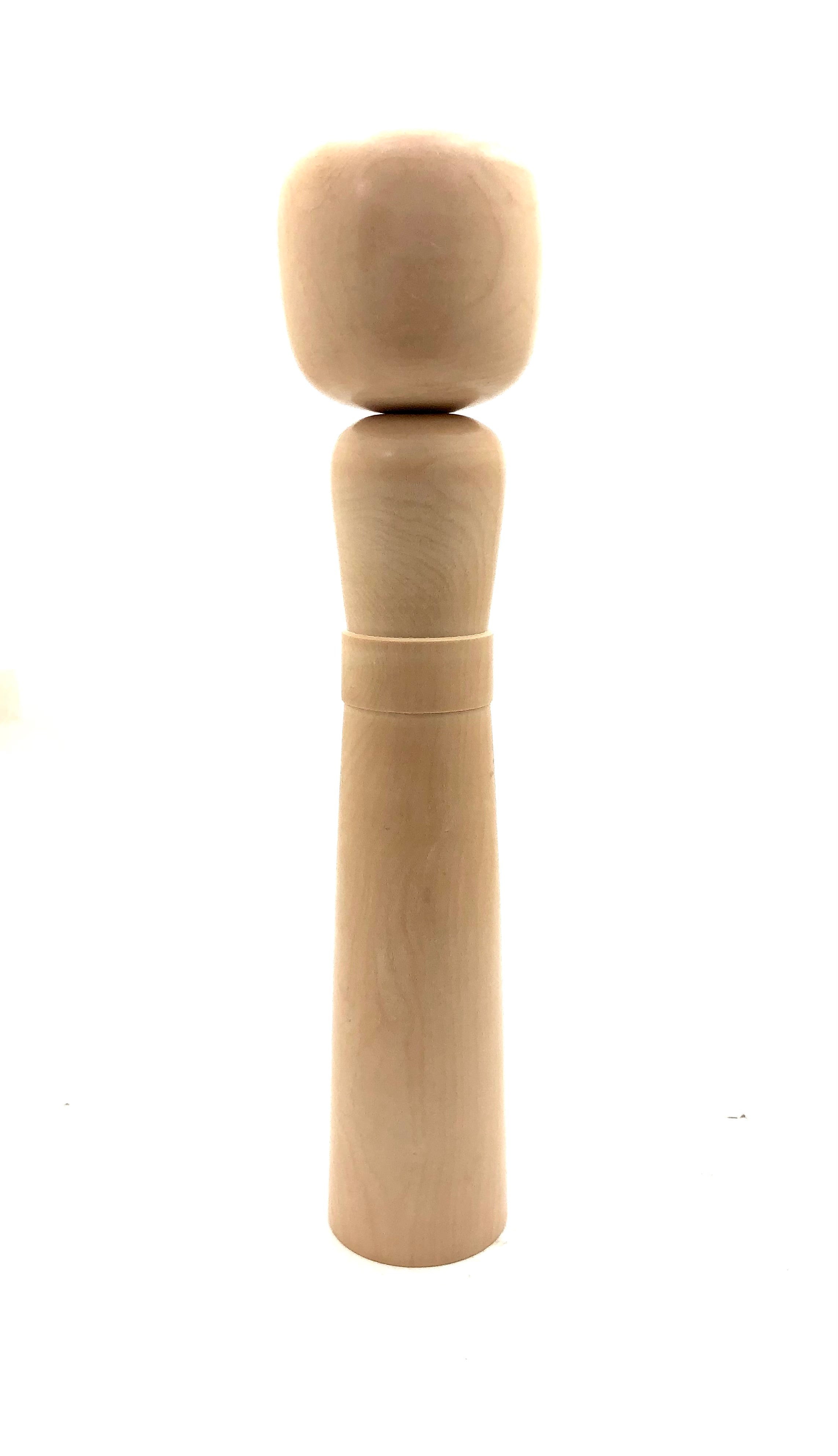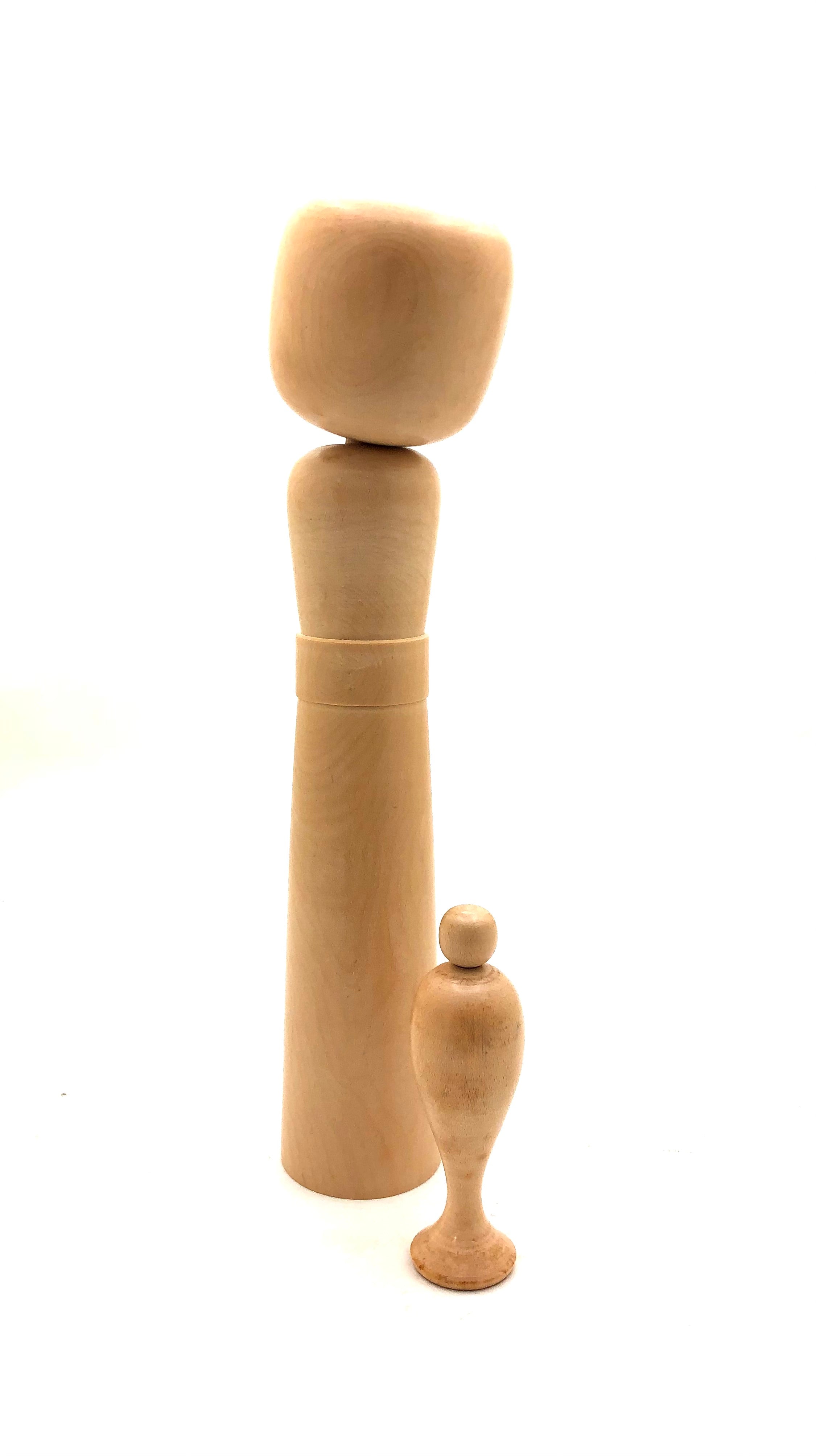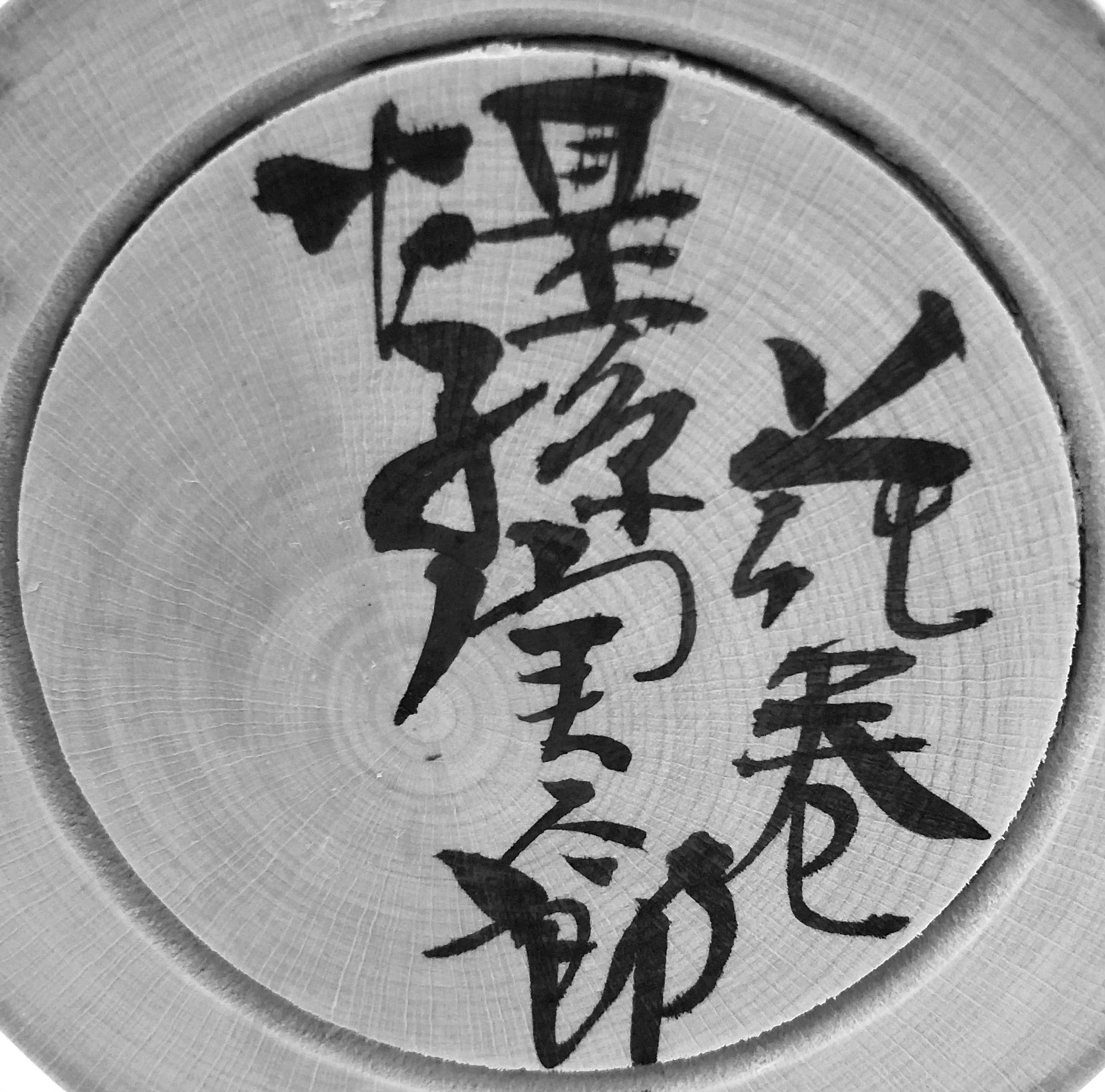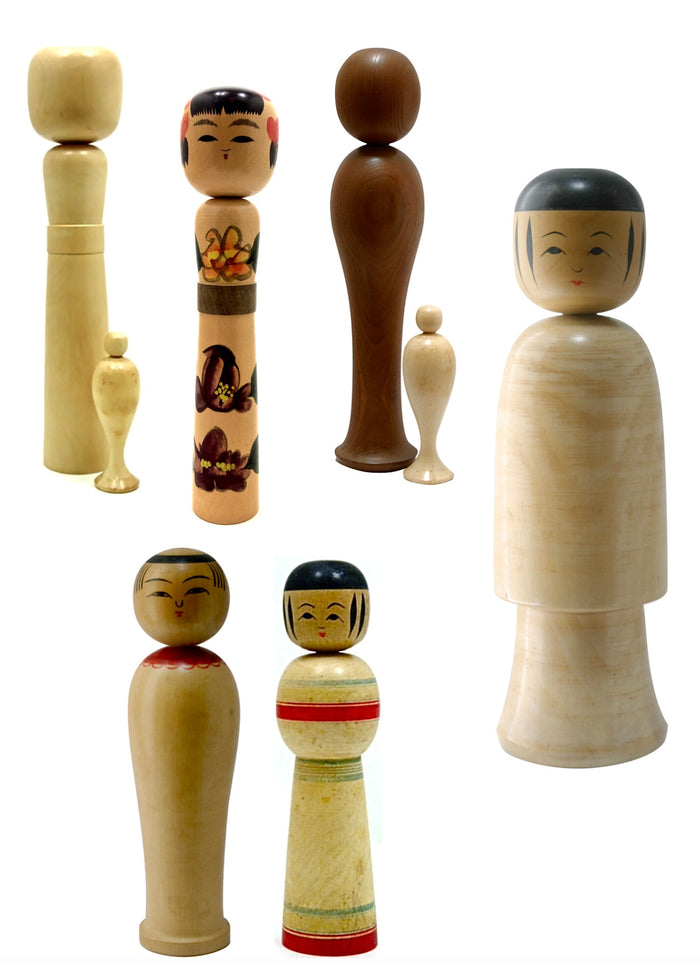


Traditional Vintage Nambu/Kina Kina Family Kokeshi by Suzumago, Jitsutarou
Dimensions: 14-1/2”h
This is the traditional Kina Kina Kokeshi of the Nambu-kei family by Jitsutaro, Suzumago (b.1908-1984). This doll was styled after what might well be considered the original Kokeshi as it is said they were always unpainted and modeled after a smaller version of the baby’s pacifier or ‘teething’ doll called Kikuriboko, or "Child of Wood" (see the second image of the Mother & Child version comparing the size of the two). The larger version was a doll made for an adult and was modeled after the same body form. As in every case the wood has a very smooth surface and no ornamentation to facilitate its purpose. The Kokeshi has the standard “nodder” head that is snapped onto the body so that they would turn and wobble. With no decoration other than a refined form and a suggestion of an obi on the body. The piece is titled and signed on the base.
See additional writings on our website related to this subject: Under our Browse and Learn section, please refer to https://mingeiarts.com/collections/yajirou-kei-family for full details on the history and development of this style doll.
Condition: Excellent vintage condition and as originally made. Beautiful polished patina developed from age with no flaws. The doll has been published in A Collectors Guide: Traditional and Creative Kokeshi and Toys.

Japanese Traditional Kokeshi
Nambu/Kina-Kina-Kei (Family)
Prefecture: Awata
Origin:
The Nambu version of Kokeshi was inspired by the Naruko and Tougatta dolls. Nambu is also said to have been inspired by the Kina Kina dolls in that they often have light body foundations with colored decorations. Most have lathe-painted ‘rokuro moyo’ colored lines and painted faces with a single bang (or a line of hair across the forehead.,
The Kina Kina style of family dolls is always unpainted and is based on other varieties of painted dolls. This family of traditional dolls might well be considered the original Kokeshi, as it is said they were modeled after a baby’s pacifier. They originated in the cities of Hanamaki and Morioka, and the Yumoto Onsen in Awate Prefecture. Several shapes of kina-kina continue to be made now in somewhat larger sizes. These have been called Kikuriboko, or, "Child of Wood."
Collector's note – characteristics / painting style:
Nanbu — This style has a traditional head and body shape with a head shape, which may “bobble” and squeak when turned, and also has a range of hairstyles, including a single bang, double or split bang, and side hair fringes, with a variety of face styles. Common are eyebrows (a single line) and curved fatae-mabuta eyes, with double closed or slight eyelids. Occasionally, they have single-lid eyes or hitoe mabuta (sleepy eyes). Many have a variety of noses, and small red mouths which are usually open. All their bodies are often decorated with a red lace-like shoulder dome (mori agari bubun), design, and flowers such as chrysanthemums or peonies.
Kina-Kina —
These dolls started as unpainted ‘teething’ dolls, and the wood would have a very smooth surface. These unpainted versions, called Kina-Kina, would have movable heads, similar to the modern “nodders”, where the head will flop back and forth. The head would be of the snap-on type, attached loosely so that it would turn and wobble. At one point, some Nanbu artists, influenced by the popularity of Narugo and Tougatta dolls, began painting the plain Nanbu-kei with stylized chrysanthemums. These decorated dolls were then called Hanamaki dolls with bangs, side fringes, double eyelids, and cat or round noses. Though these plain dolls are not as decorative as others of the traditional school, their unique, flowing forms are stronger visually because of their inherent elegance.

Leading, Craftsmen:
Anpo, Ichiro - No additional published information
Matsuda, Hiroji, 1938, (Morioka, Iwate) - Master Matsuda, Seiichi
Matsuda, Seiichi, 1899, (Morioka, Iwate) - Master: Mitsuda, Tokutaro
Matsuda, Shoichi, 1930, (Ishidoriya, Iwate) - Master Matsuda, Seiichi
Sakashita, Takao , 1944-2014 - No additional published information
Suzumago, Jitsutarou, 1908, (Hanamaki, Iwate) - Master: Susumago, Mokichi
Sasaki, Kakuhei, 1933, (Waga, Iwate) - Master: Sasaki, Yoshiro
Takahashi, Kinzo, 1923-2002, (Hanamaki, Iwate) -Master: Takahashi, Goro
Explore & Learn More about Nambu/Kina-Kina-Kei (Family)